Pickled garlic is here to brighten up your cooking with a mellow flavor that still has some bite. This easy, delicious, quick pickle recipe is simple to make and has many uses in the kitchen and medicinally. Throw these common ingredients together to enjoy all the benefits of pickled garlic!
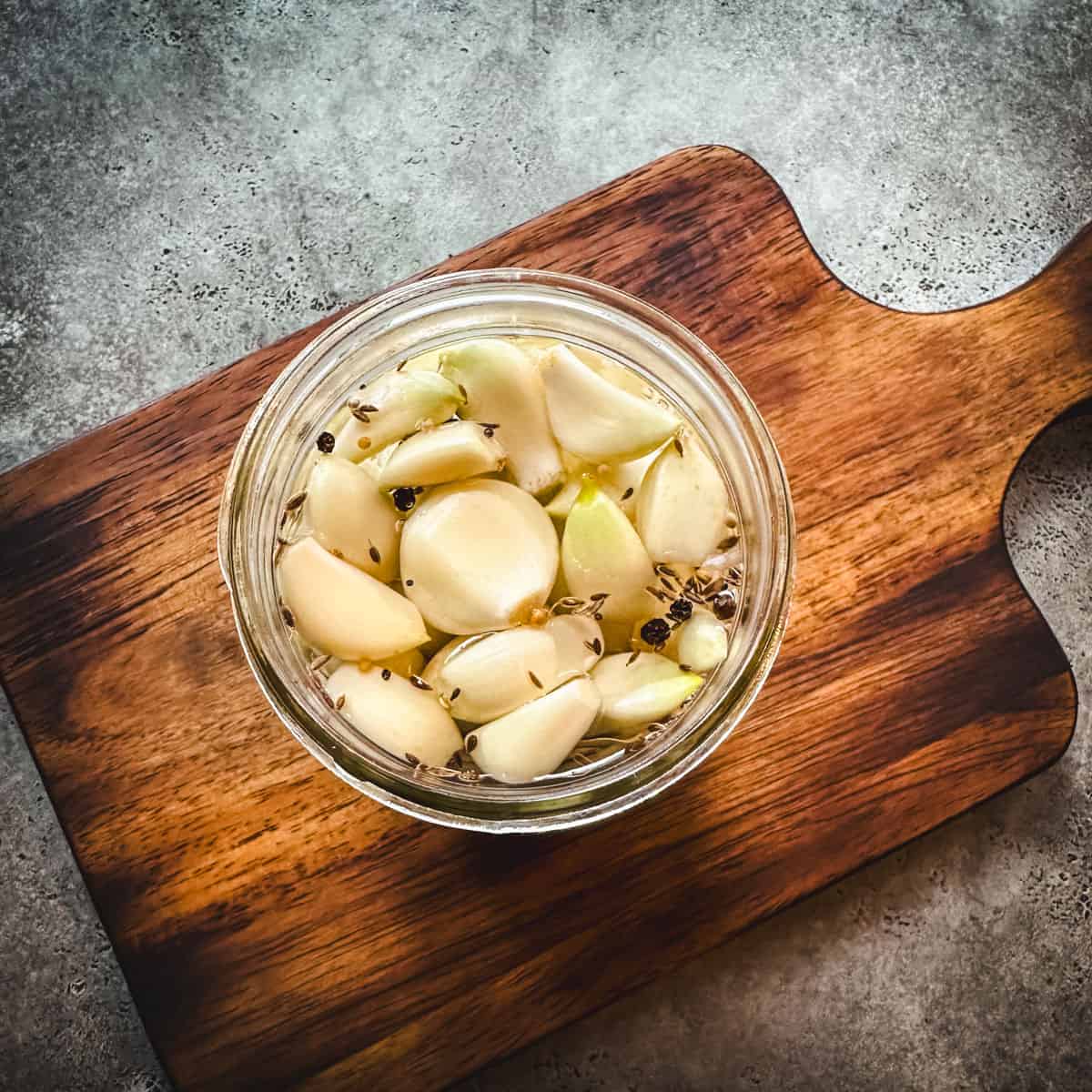
Want to save this post for later?
Quick Pickles for All
If you are in an “I can pickle that!” phase, I’m right there with you! If I’m honest, it’s pretty much my permanent state. Pickles of all kinds have a delicious tangy crunch that can’t be replicated!
Pickles have always been a favorite food of mine. Don’t get me wrong, I love some good old-fashioned fermented pickles and making up a big batch of canned dill pickles.
But as a busy mom, I’ve been into quick pickling lately. The best part about making quick pickles is how fast and easy they are to throw together, making them achievable for most people.
Making quick pickles, or refrigerator pickles, is a super simple way to make a small batch of whatever you want to be pickled. All it takes is a little room in your fridge, a jar or two, and a little bit of time!
Pickled garlic is perfect on a charcuterie board, as a garnish, or anywhere you’d usually use garlic in cooking. It also has medicinal benefits and boosts immunity.
Want more refrigerator pickle recipes? Here are 16 Quick Pickle Recipes to try!
Benefits of Pickled Garlic
We’ve established that pickled garlic is easy to make and delicious. Now, let’s talk about the medicinal and health benefits of pickled garlic.
The good news is that pickled garlic is just as healthy as raw garlic, lacto fermented garlic, and fermented honey garlic. Even post-pickling, garlic has antiviral, antibacterial, and antibiotic properties that can help boost immunity.
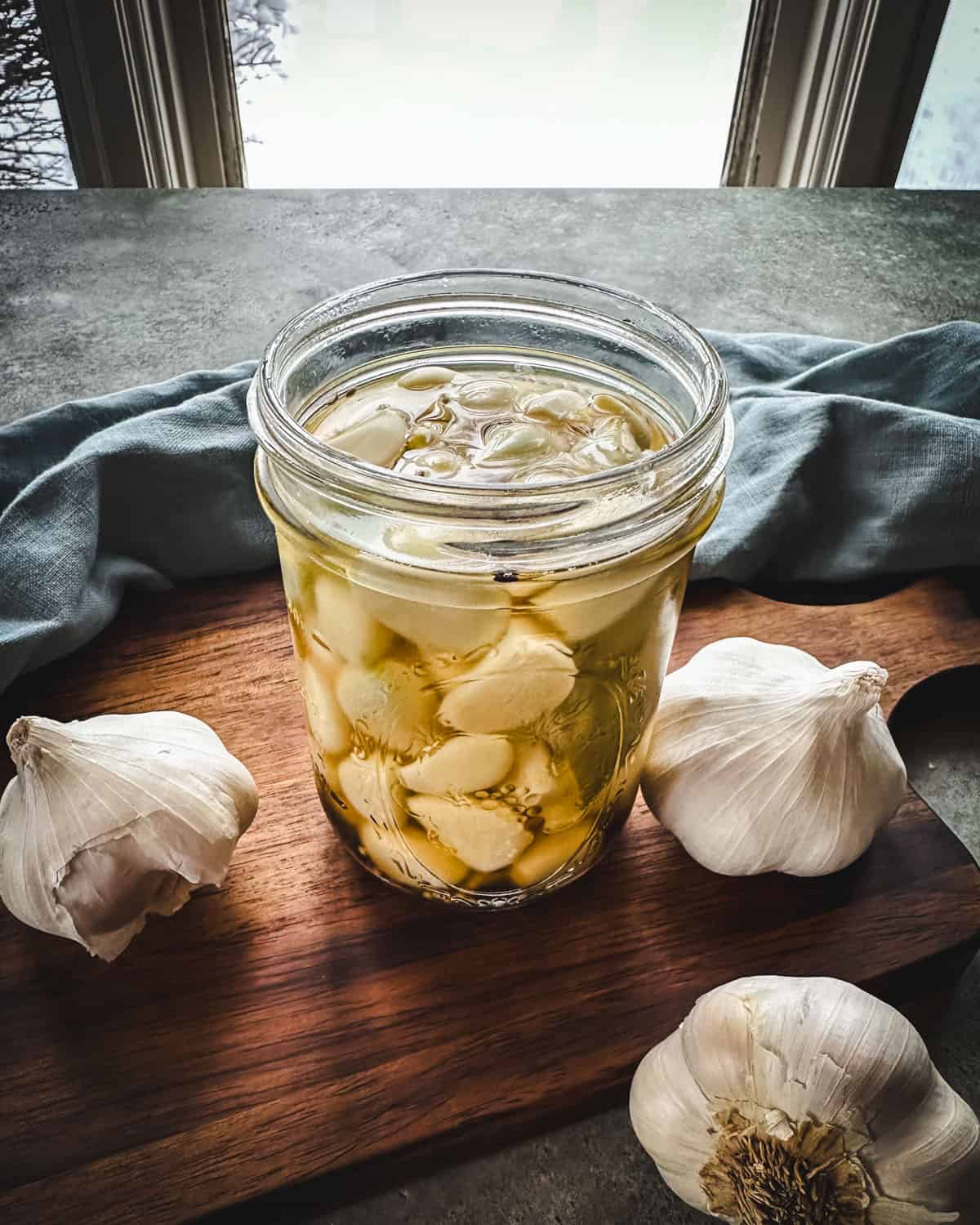
Garlic is health-beneficial when you eat it in recipes, but it is more so if it’s not cooked. Quick pickled is the best way to calm the tang of fresh garlic and still get the health benefits.
When you eat these with happy hour on a cheese board, throw them in a salad dressing, or use them to flavor tuna or other sandwiches, you’re reaping the health benefits of this yummy pickled treat!
Important to Note
Garlic that is preserved by pickling or fermenting sometimes turns blue or greenish in color. If this happens, don’t worry! It’s normal and not harmful at all.
There tends to be worry about botulism when it comes to preserving garlic, but it’s really not a concern in this recipe. Botulism can’t grow in the acidic environment that the vinegar provides.
Let’s pickle!
Quick Pickled Garlic Recipe
This recipe is a great way to preserve garlic. The pickling process mellows the flavor just a little, but it still has that garlicky zing you want in your cooking.
Ingredients
Whole garlic cloves: Homegrown garlic works great, but store-bought is just as good.
Whole spices: Mustard seeds, dill seeds, peppercorns, bay leaf.
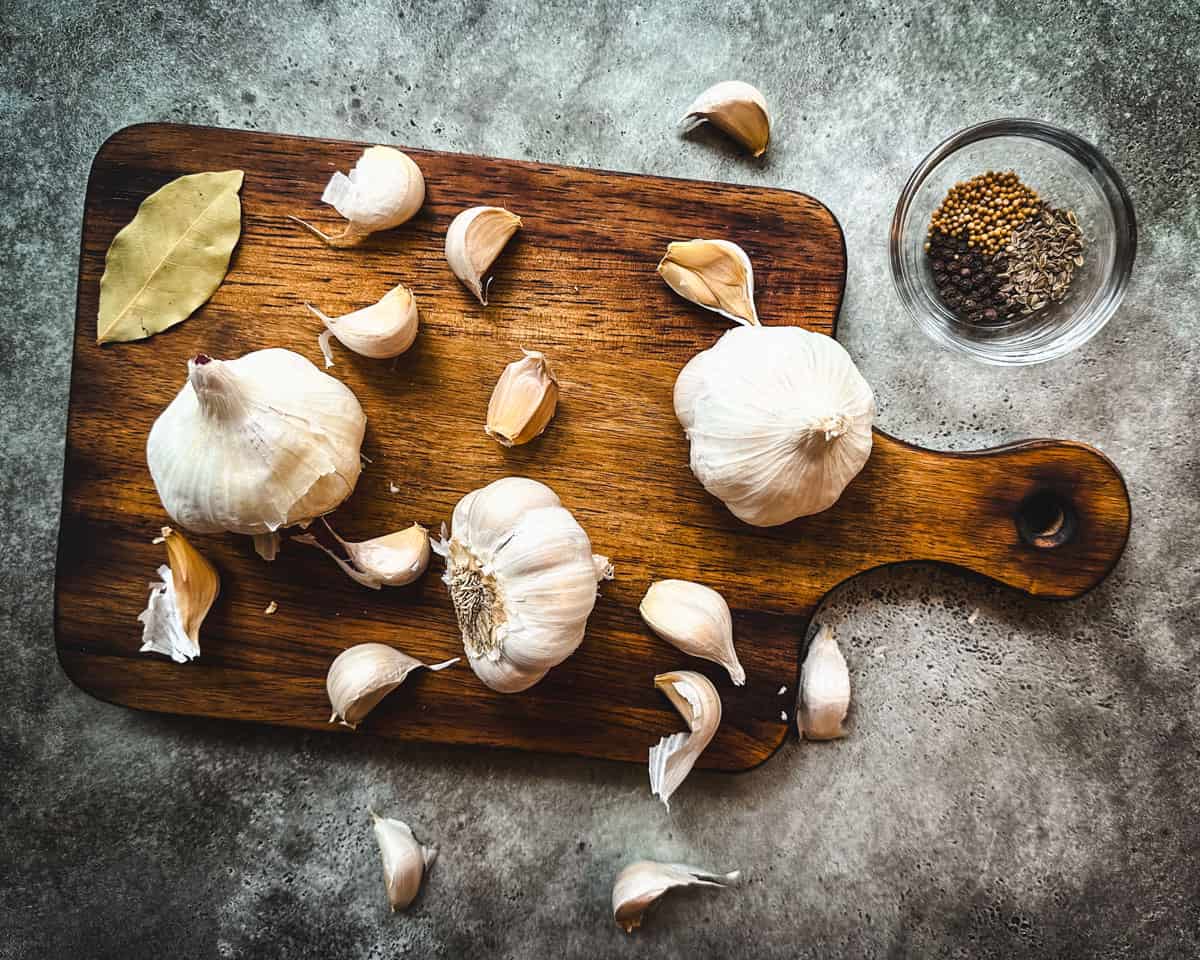
White vinegar: I like this white vinegar for my pickling endeavors. For the breakdown of the best pickling vinegar and more, read Vinegar 101.
How to Make Pickled Garlic
First, peel all of the garlic cloves you are going to pickle. It should be about two cups. If you need a shortcut for peeling two cups of garlic cloves, follow the instructions below!
One method for peeling the garlic to make it a little quicker is to slice off the ends of the cloves, then put them in a bowl or other container with a lid and shake it vigorously.
Shaking the garlic will loosen the skins and make them easier to remove.
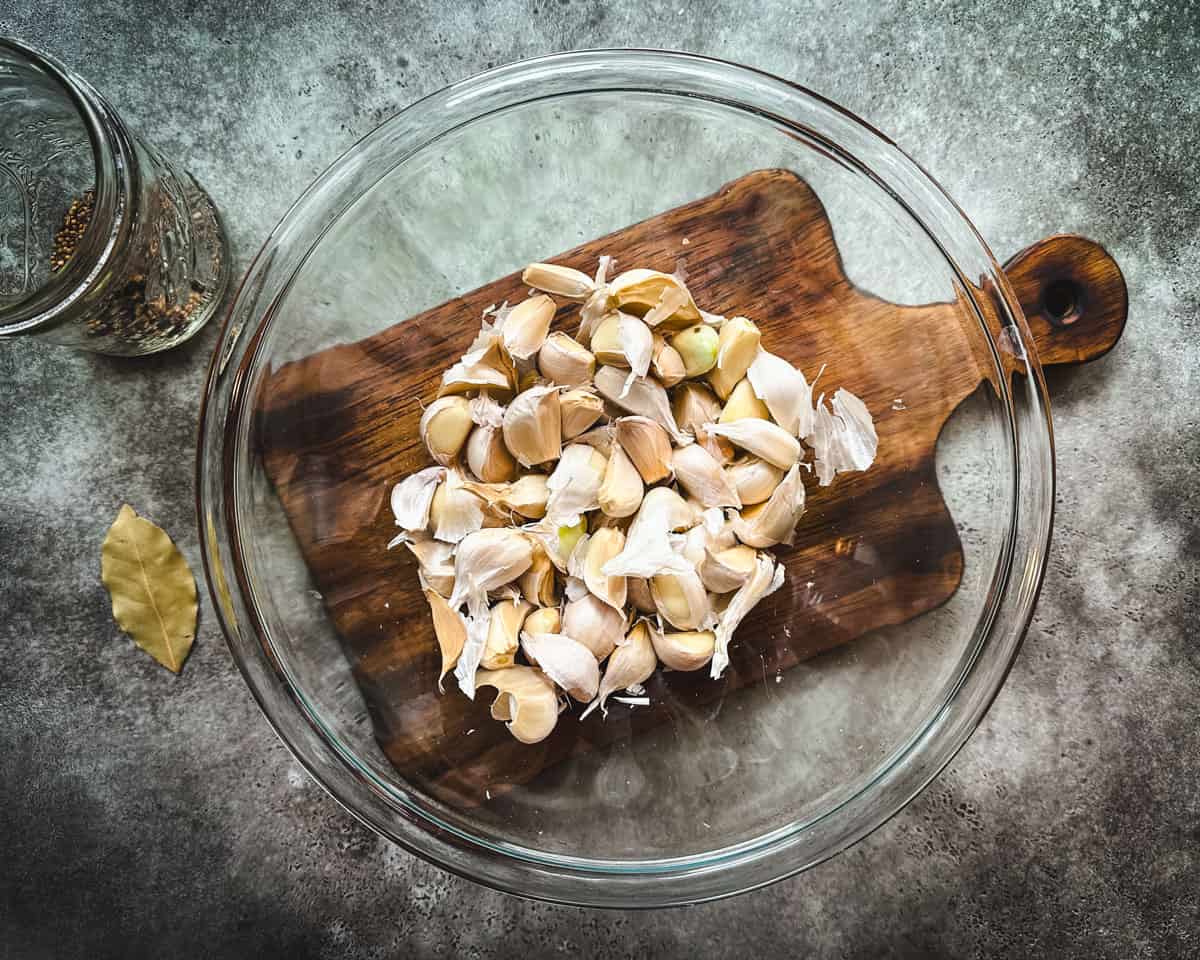
Then, put the mustard seeds, dill seeds, peppercorns, and bay leaf into a pint jar.
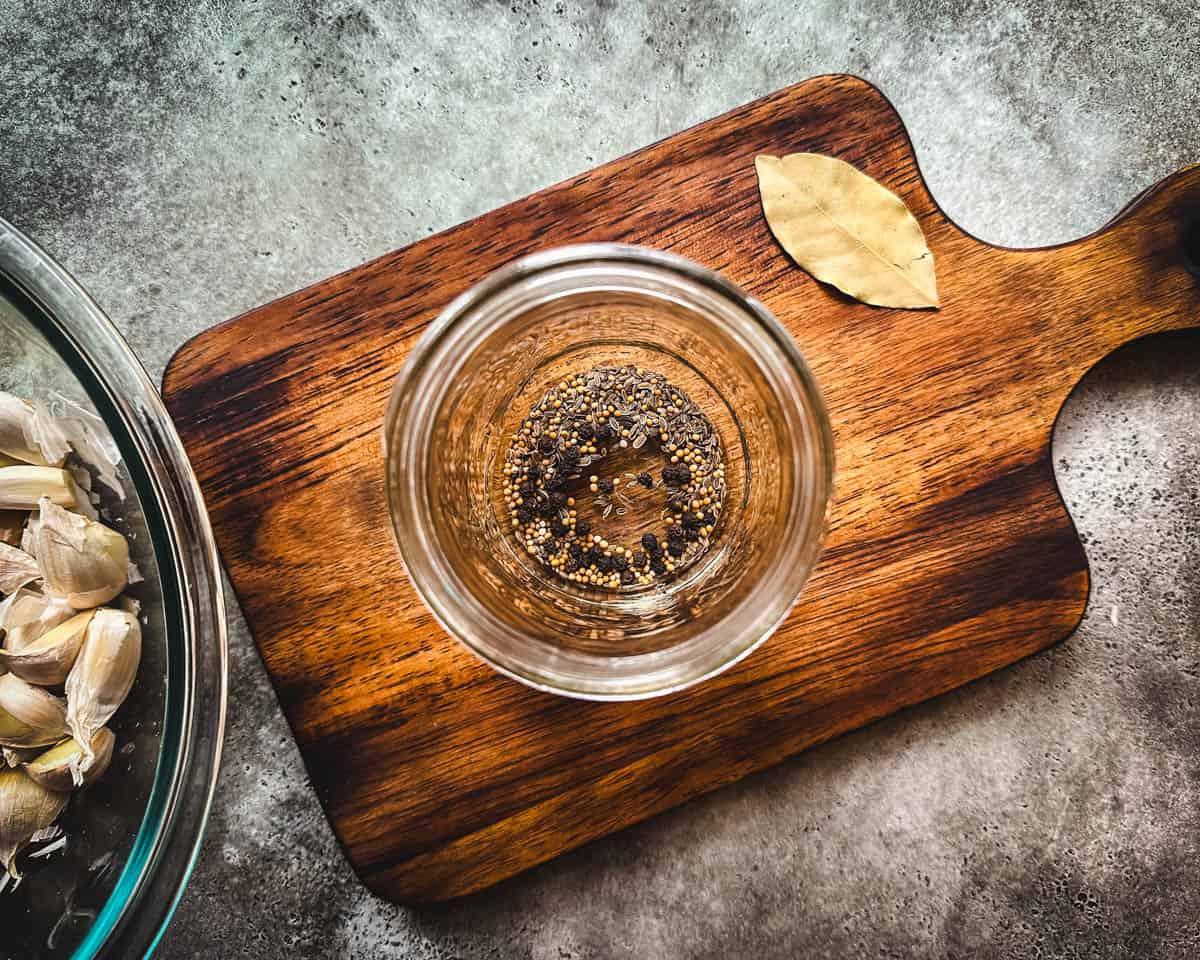
Then, put the peeled garlic cloves into the jar.
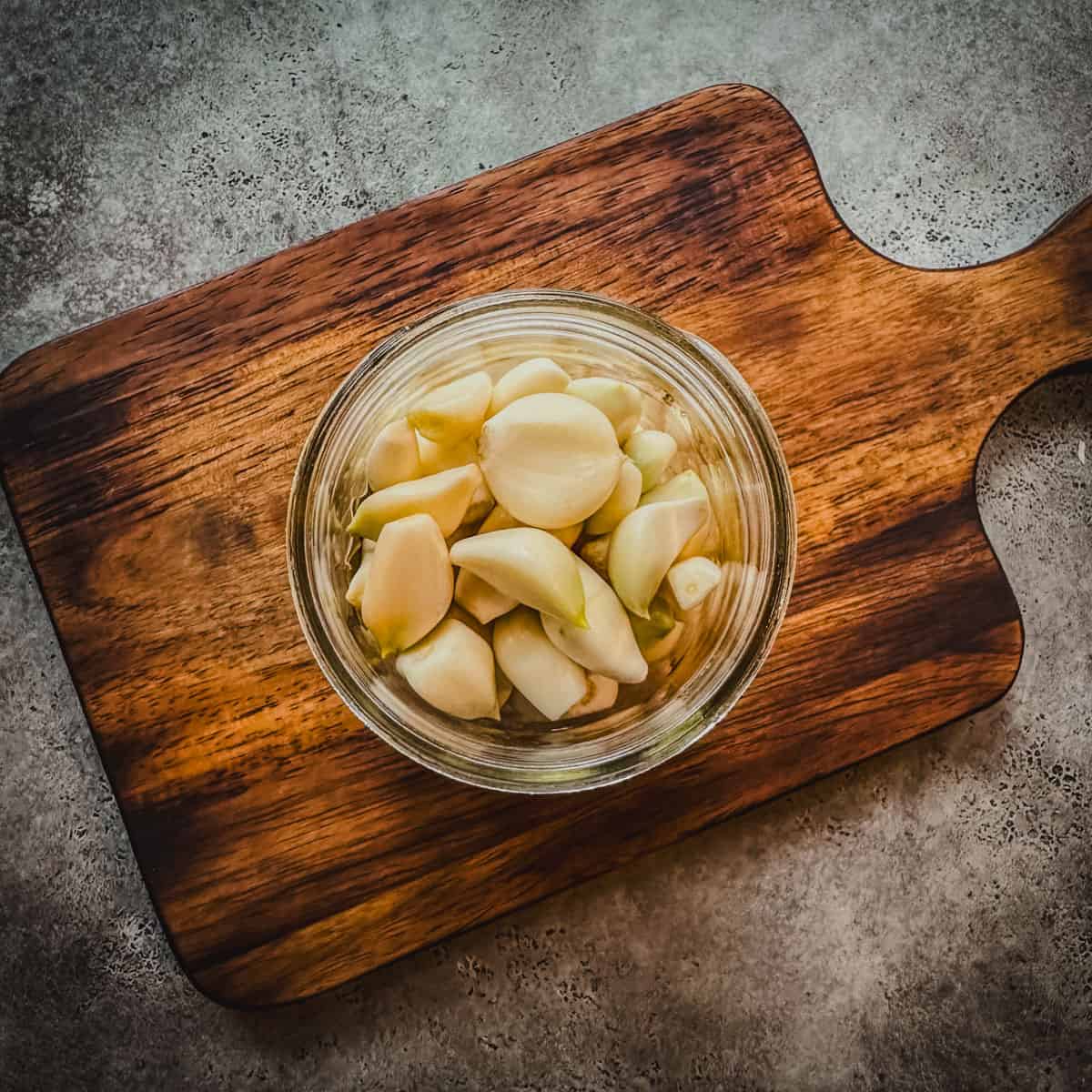
Next, bring the vinegar, water, sugar, and salt to a low boil in a small saucepan over medium heat. Stir it occasionally until the sugar and salt are dissolved.
Then pour the vinegar brine over the garlic cloves, making sure they are completely covered.
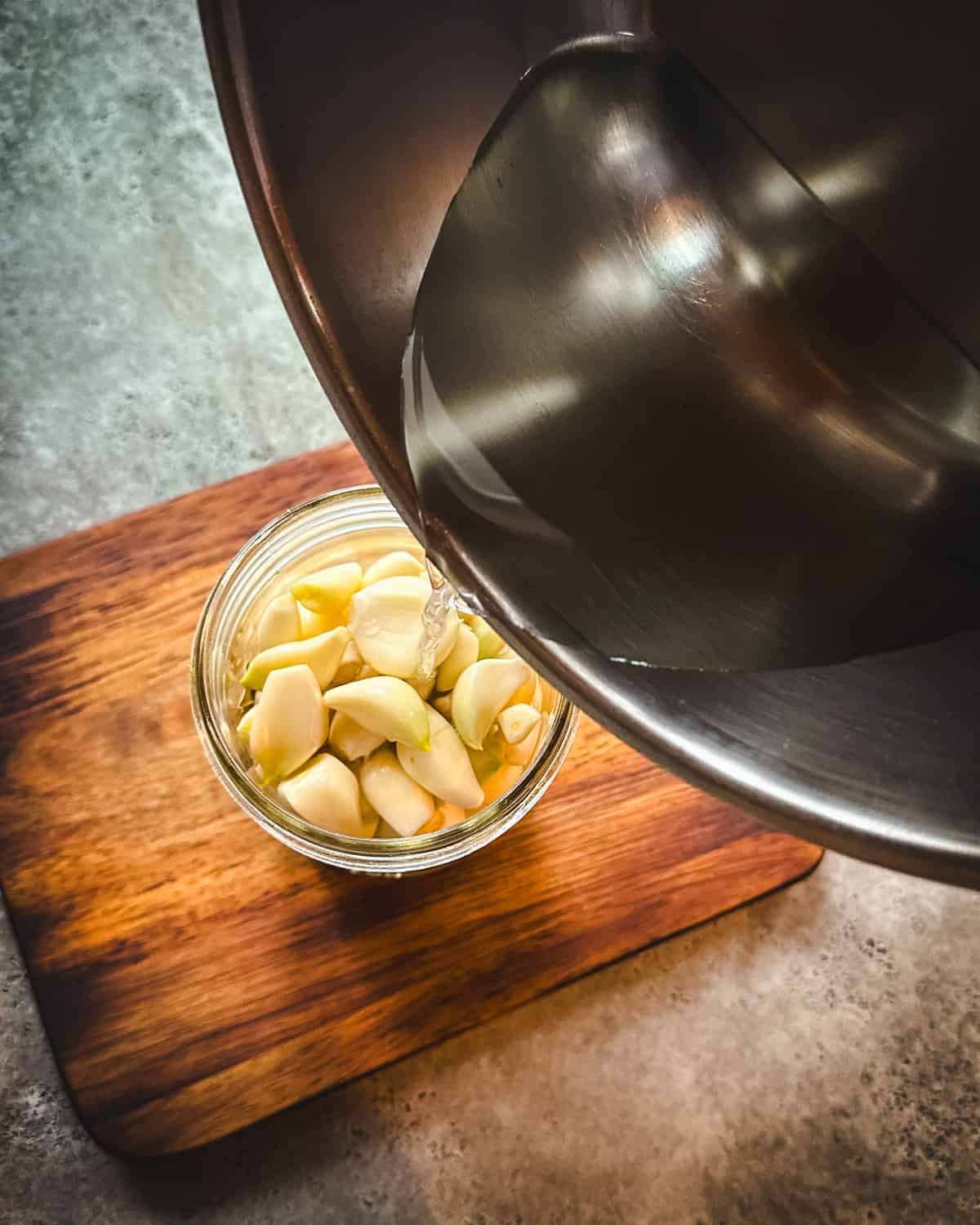
Put a cap on the jar and let it cool to room temperature, then put it in the refrigerator.
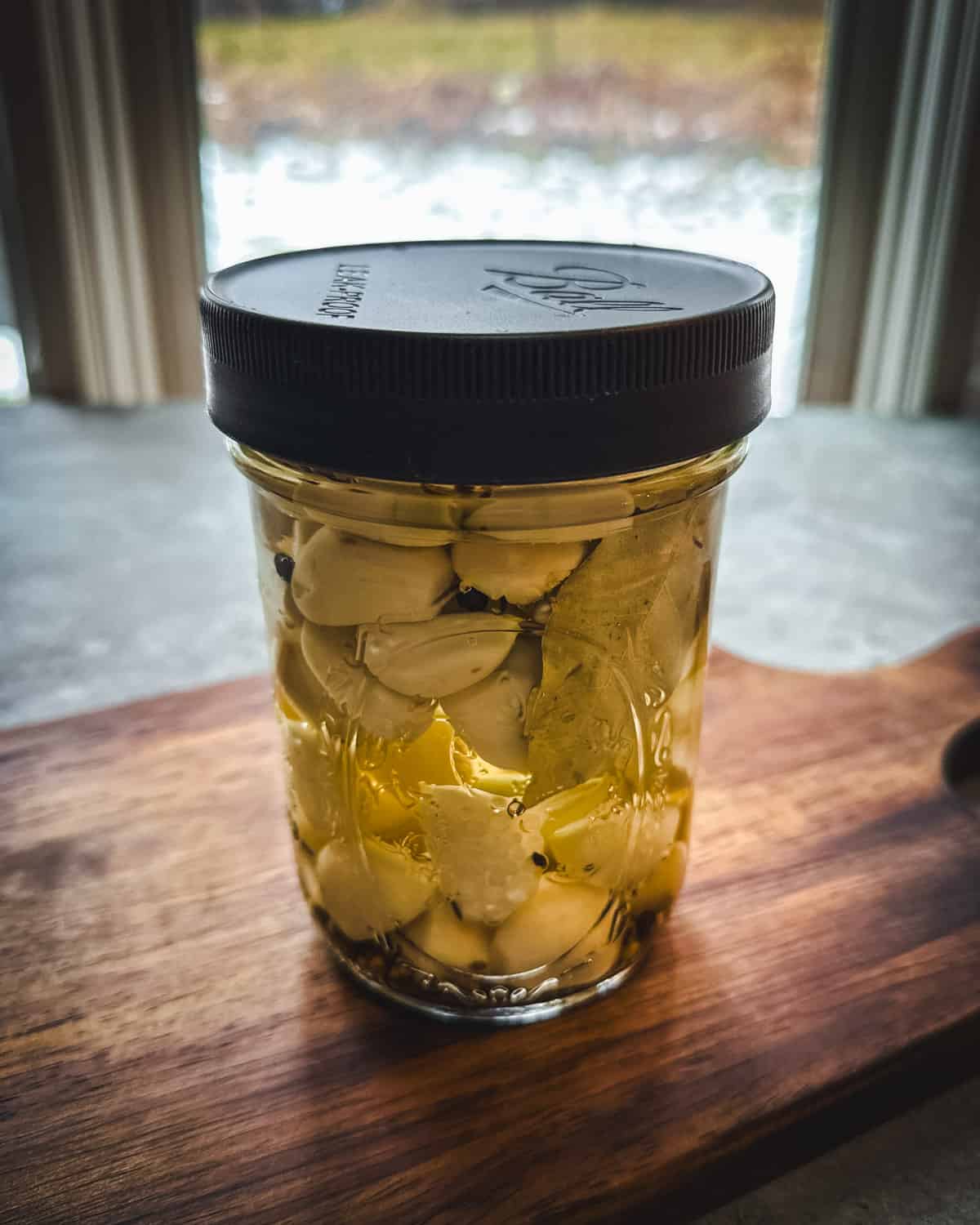
It’s best to wait two or three days before sampling the pickled garlic so that the flavors have time to develop. Get excited though: garlicky deliciousness is pickling away in the fridge. Your part is done!
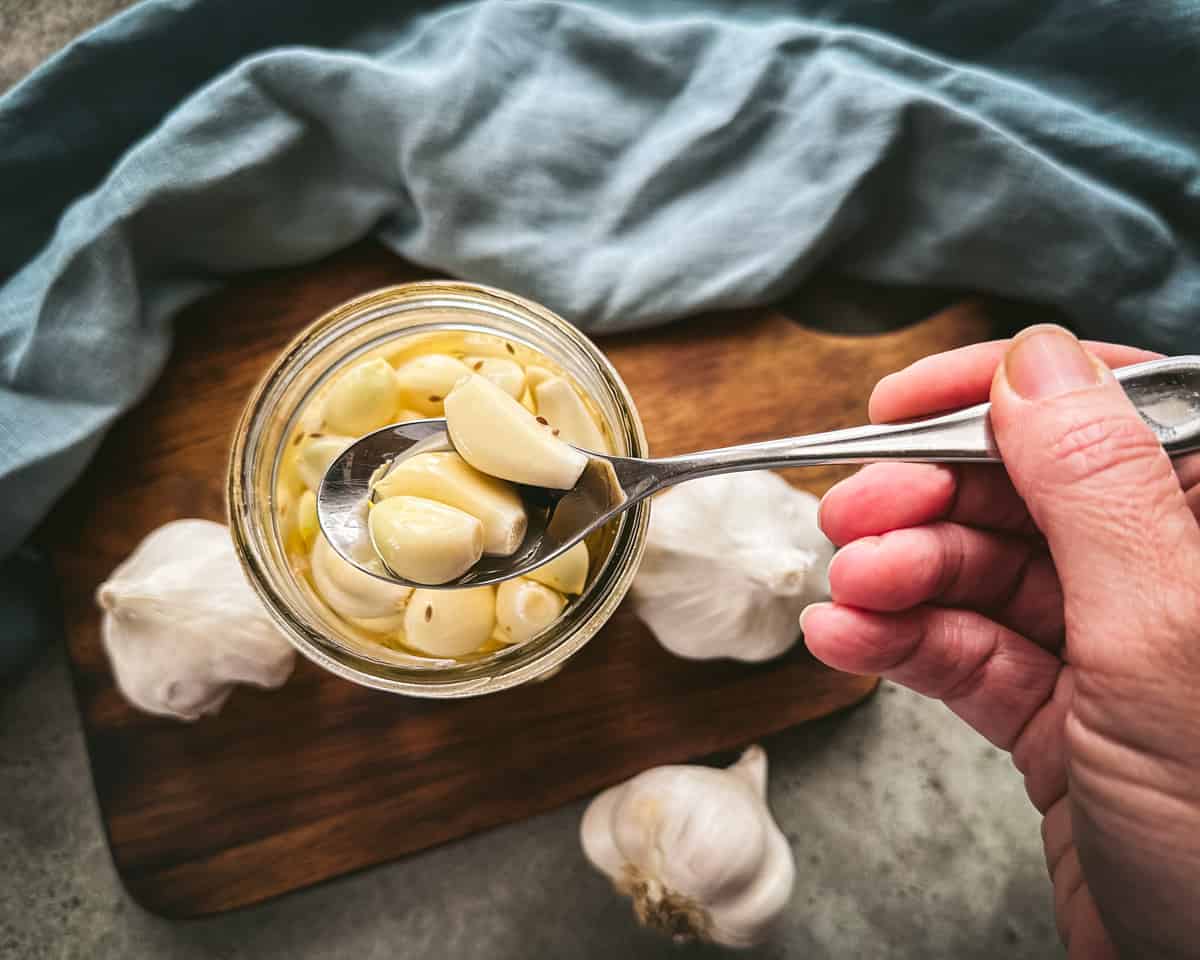
Storing and Using Pickled Garlic
Store pickled garlic in the refrigerator; it will last for several months. Although, I seriously doubt it will go that long without being eaten!
The pickling process does change the taste of garlic a bit. It slightly tames the bite, but it still has some delicious garlicky spice. It’s the perfect midway between completely raw garlic and cooked garlic.
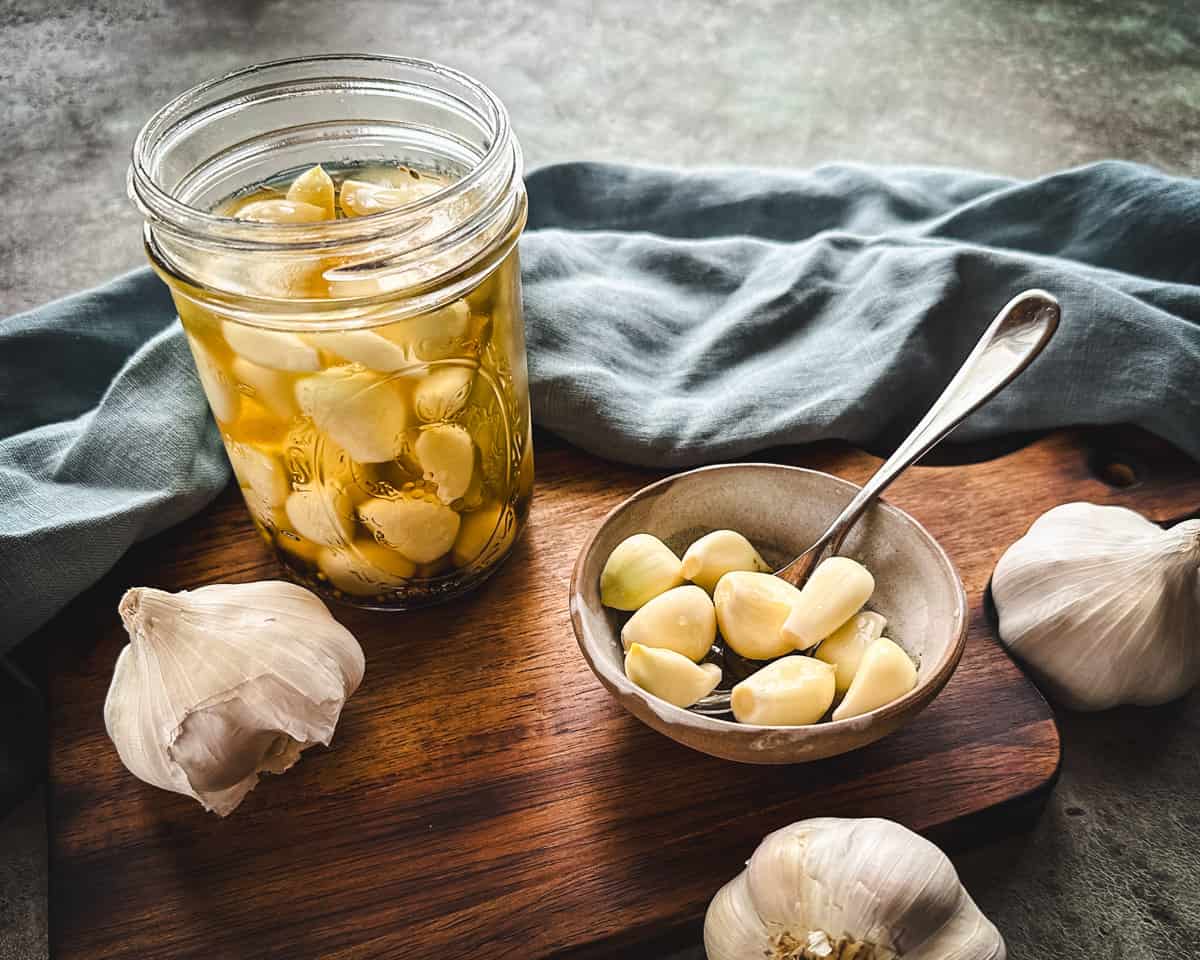
Use pickled garlic in any cooking recipe to replace fresh garlic. Or, use whole cloves on a cheese or charcuterie board or any appetizer platter.
These garlic pickles are great as a garnish on a bloody Mary. Slice them and add them to a sandwich or on top of a loaded burger or hot dog. They also go great in tuna or chicken salad!
More Quick Pickle Recipes
- Quick Pickled Cranberries
- Quick Pickled Jalapeno Peppers
- Quick Pickled Green Tomatoes
- Quick Pickled Dill Pickles
- Quick Pickled Pepperoncini
- Quick Pickled Pumpkin
- Quick Pickled Onions
- Quick Pickled Radishes
- Quick Pickled Asparagus
Quick Pickled Garlic
Equipment
Ingredients
- 2 cups whole garlic cloves
- ½ teaspoon mustard seeds
- ½ teaspoon dill seeds
- ½ teaspoon black peppercorns
- 1 bay leaf
- ½ cup white vinegar
- ½ cup water
- 1 teaspoon sugar
- 1 ½ teaspoon pickling salt or sea salt
Instructions
- Peel the garlic cloves.
- Put the mustard seeds, dill seeds, peppercorns, bay leaf, and peeled garlic cloves into a pint jar.
- In a small saucepan over medium heat, bring the vinegar, water, sugar, and salt to a low boil, stirring occasionally, until the sugar and salt are dissolved.
- Pour the vinegar brine over the garlic cloves, covering them completely.
- Cap the jar and let it cool to room temperature, then refrigerate. It’s best to wait 2-3 days for the flavors to develop. The pickled garlic will last in the refrigerator for several months.
Notes
- A quicker way to peel the garlic is to slice the ends off of the cloves, then put them in a bowl or another container with a lid and vigorously shake. This will loosen the skins and make them a bit easier to remove.
- The pickling process tames the bite of the garlic slightly, but it still has some deliciously garlicky spice.

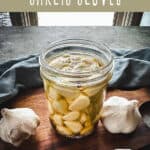
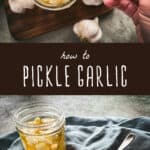
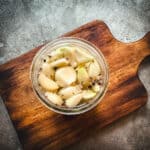

Leave a Reply